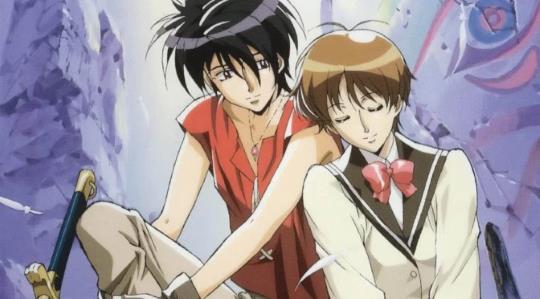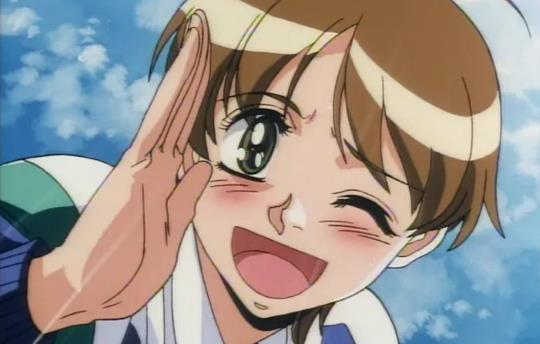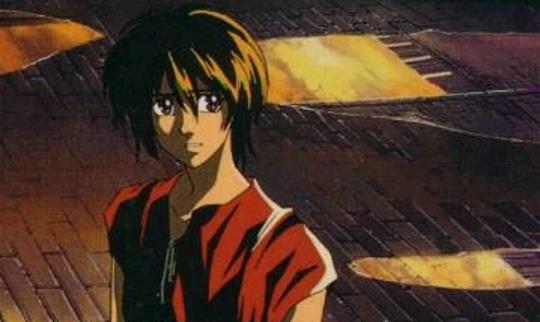Silver Screenings: Vision of Escaflowne

With the new design of GamerTagged.net will also come a new series of columns designed to encourage me to write more, at the very least as a “warm-up” to more substantial material. I’m also hoping the regular practice helps make it easier to “get into the writing mood” and further hones my knitting together of phrases, words, and sentences. Giving people more reasons to actually check the site regularly helps, too.
I try not to look back on “the good old days” with the perception that it was better than today. In fact, after this week’s blog postings it will probably become clear I’m in constant contention with nostalgia and how it can manipulate our perceptions of the past.
Unfortunately, I decided to binge through Vision of Escaflowne and now I hate every anime that’s been released since the 90’s.
At least, I did for a while. The funny thing is you don’t really have a grasp of modern sensibilities until they become a part of the past. Even then, those sensibilities are typically defined not by the full array of content created, but by the content that had the greatest cultural impact. What makes a great cultural impact is not always recognized as being the best that culture has to offer, but even the most seemingly vapid popular media can be worth scholarly study.
For example, Home Improvement was a huge success of the 1990’s. While it’s easy to look back on the show and find it to be little more than white middle-class sitcom tripe, we must also acknowledge that the show was more than Tim Allen grunting and using equipment perhaps too dangerous for his limited mental capacity.
Consider Tim the Toolman Taylor’s friend and assistant, Al Borland. In an era following the hypermasculine 80’s, Al was often a contrast to Tim’s typically masculine ways. Al enjoyed handiwork, but he was also well-read and sensitive. While the show would occasionally play these traits up for laughs, they would also act as the straight-man to Tim’s antics. It is only through comedy’s laughter at the tragic absurdities of reality that we realize Tim is the hero despite being inferior to Al in many ways. Similarly, Tim relies greatly on the wisdom of his well-educated and well-traveled neighbor, Wilson.
I think it says much of the 90’s that Tim, the model of masculinity in an adult male, is incomplete and must rely upon the men defined by traits not often linked with masculinity. That both of these men – intellectual, sensitive, poetic, cautious – are also single or experiencing romantic woes might also say something of the era.
So what does this have to do with Vision of Escaflowne? That perhaps it’s not necessarily that the show is “better”, but the sensibilities of the time feel missing from modern anime’s sensibilities. I do believe it can be argued that modern sensibilities have lost some intellectual honesty, but I’d rather not focus on that. It would ignore the fact that one of the reasons I adore Vision of Escaflowne so are because of the time period I first experienced it.

It must have been during a summer or holiday break in 1998 or ‘99 that my brother brought the VHS tapes home, fan-subbed and borrowed from a College roommate. I was either in the final years of middle school or approaching the ninth-grade, soon becoming a teenager. As the melodramatic romance of Hitomi’s school life played out, I grimaced, looking over to my brother.
“What have you got me watching?” I groaned.
A few months ago I had watched the first episode of Sengoku Night Blood, an anime in which a young woman finds herself transported to a realm where feudal era warriors are fancifully designed and warring with each other. Also: some of them are vampires.
That the show’s primary audience was clearly women isn’t what turned me off of it. After all, while my middle-school self was ashamed to be exposed to stereo-typically feminine narrative elements in Vision of Escaflowne, the primary target audience remains young women even as the blood starts splattering. In regards to Sengoku Night Blood, it’s more that the female protagonist was a non-character. Within the first minute of the show she is teleported away, and from then on it’s suggestive yaoi-based dialogue and positioning among fictionalized historical figures and a vague plot where this young woman is the key to the world’s salvation.
I suppose this is what it feels like to be a woman watching Sword Art Online and experiencing a protagonist as boring as Kirito.
It’s all about those sensibilities, though. A lot of modern anime is currently going through a phase of appealing to Otaku and broad, escapist tastes. Kirito and Yuzuki – Sword Art Online and Sengoku Night Blood’s protagonists, respectively – are self-insert wish-fulfillment characters, boiling the concept of the power fantasy to its barest, broadest, plainest white bread interpretations.
From the very first episode Vision of Escaflowne surpasses these creations artistically. The show has the patience to wait before sending Hitomi off to Gaea, using the episode’s run-time to establish who she is. We understand she’s got an average but pleasant high school life, that she has a hobby of reading fortunes and tarot cards, is one of the best runners on the school’s track team, has an incredibly loyal best friend and is crushing on an upperclassman about to leave for England.
That last piece is perhaps most significant, as Hitomi also indicates she is an assertive risk-taker by confessing her feelings to her crush before the chance is gone. In other words, Hitomi is brave and not fragile.
This is important as Gaea is a world where old-fashioned sensibilities still rule. Noble and gallant men treat Hitomi with great care, but within those good intentions is the systemic chauvinism that assumes a feminine fragility. This unintentional disrespect persists throughout the series, primarily in the character of Allen. That he one day notes he may need to keep her a caged bird suggests that he does not understand nor does he respect her strength (that, and he disguises his fear of abandonment with flowery language and gentlemanly gestures).

Sad boys in rain
Van, on the other hand, establishes a deeper relationship with Hitomi as the series progresses. His first comment to her may have been disrespectful, protecting his masculinity by calling her womanhood out as something inferior, but she responds so strongly that it comes as a surprise. From then on Van is continuing to understand more and more what secret strength Hitomi possesses.
Yuzuki, on the other hand, is told she has special blood. Why? Because she’s the protagonist. There’s nothing about her personality that makes her special. Not like Hitomi, whose importance in the world of Gaea is first established – and seemingly mundane – on Earth. She is not special because the plot deems it so, but because her characteristics make her strong enough to bring about the show’s necessary conclusion. A strength not any woman – or man – would possess.
Of course, Vision of Escaflowne had the advantage of being a twenty-six episode series – though it was originally planned as thirty-nine, which explains why some events seem to happen so suddenly or in the strangest of places. Just as American television has reached a glut of media competing for budgets and audiences, limiting each series run to fewer episodes than prior years would have afforded them, anime is seeing more and more shows limited to thirteen episodes. Part of this is a result of the Light Novel that many of these shows are based on.
However, I think part of it is just a disinterest in building Yuzuki up as a character. Just as Western media is beginning to tease potential “ships” for the Tumblr audience – be they heteronormative or same-sex – anime is filled with this post-modern audience completion and narrative. Rather than tell a whole story, characters are left to their barest TV Tropes classification so that fans can craft their own comics and stories (naughty or no) without the story getting in the way.
Even if Vision of Escaflowne was not the best anime of the era, it comes from a time when characters were inspired by real people and behaviors rather than a TV Tropes database. That much, at least, makes it worth preserving.


